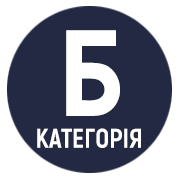TRAINING IN BIOSTATISTICS IN MASTER'S PROGRAMS IN PUBLIC HEALTH: THE EXPERIENCE OF NORTHERN EUROPE AND UKRAINE
DOI:
https://doi.org/10.32782/eddiscourses/2025-1-23Keywords:
biostatistics, educational and professional programAbstract
The current development of science, technology, and medicine, as well as globalization and the increasing threats to public health, require the training of highly qualified specialists capable of effectively competing in the international labor market. Biostatistics plays a key role in ensuring the quality of medical research and making informed decisions in the field of public health.Aim. To conduct a comparative analysis of approaches to teaching biostatistics in Master of Public Health programs in Northern European countries and Ukraine, with an emphasis on identifying best practices for teaching biostatistics aimed at developing practical skills in analyzing population health data.Materials and Methods. The educational and professional programs «Public Health» were analyzed regarding the place of the discipline «Biostatistics» in the training of masters in Northern European countries and Ukraine. The curricula, course programs, and other documents, including those regulating the study of biostatistics, in the educational programs of various universities were studied. Documentary, content analysis, and analytical methods were used in the study.Results. A comparative analysis of master's programs in «Public Health» in Northern Europe and Ukraine showed that both programs have the same number of ECTS credits (120) and duration of study (2 years). All programs provide for the study of biostatistics, but the names of this discipline vary. The key difference lies in the number of credits allocated to biostatistics: in Northern European institutions of higher education, this figure ranges from 7.5 to 15 credits, while in Ukrainian ones – from 3 to 7. This indicates a more thorough training in biostatistics in Northern Europe. A general trend is the use of interactive and practically oriented teaching methods, which allows students not only to acquire theoretical knowledge but also to gain practical skills. In Ukraine, there is potential for improving the practical component, in particular, through mastering modern statistical software and increasing opportunities for internships and project activities.
References
Gore A.D. The evolving role of biostatistics in medical research. Journal of Health Science Research. 2024. Vol. 9, No 2. P. 53–54. doi:10.25259/JHSR_40_2024
Biostatistics: a fundamental discipline at the core of modern health data science / Lee K. J., Moreno‐Betancur M., Kasza J. et al. Medical Journal of Australia. 2019. Vol. 211, No 10. P. 444–446. doi: 10.5694/mja2.50372
Іншакова Г.В., Грузєва Т.С., Замкевич В.Б. Імплементація європейських підходів до викладання біостатистики в курсі підготовки магістрів громадського здоров’я. Громадське здоров’я в Україні: проблеми та способи їх вирішення: матеріали VI науково-практичної конференції з міжнародною участю, Харків, 02 лист. 2023 р. Харків, 2023. С.190–192.
Zapf A., Rauch G., Kieser M. Why do you need a biostatistician? BMC Medical Research Methodology. 2020. Vol. 20, No 1. doi: 10.1186/s12874-020-0916-4
Statistical methods used in the public health literature and implications for training of public health professionals / Hayat M. J., Powell A., Johnson T., Cadwell B. L. PLoS One. 2017. Vol. 12, No 6: e0179032. doi: 10.1371/journal.pone.0179032
Біостатистика: роль та значення у формуванні світогляду магістра громадського здоров’я / Фейса І. І., Маркович В. П., Яцина А. Т. та ін. Україна. Здоров’я нації. 2020. Т. 1, № 3. С.92–95. doi: 10.24144/2077-6594.3.2020.208858







